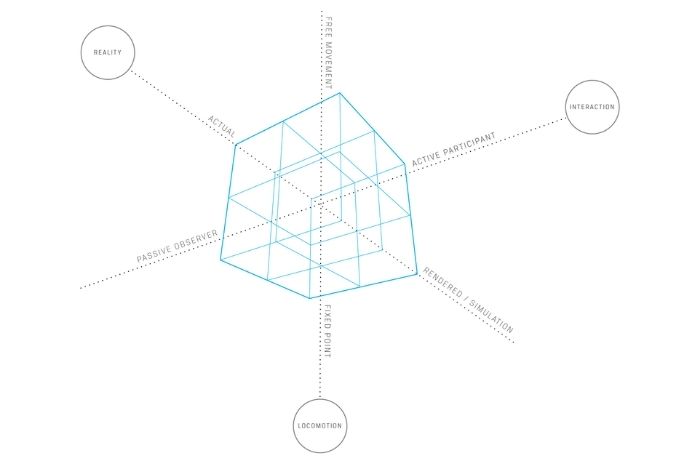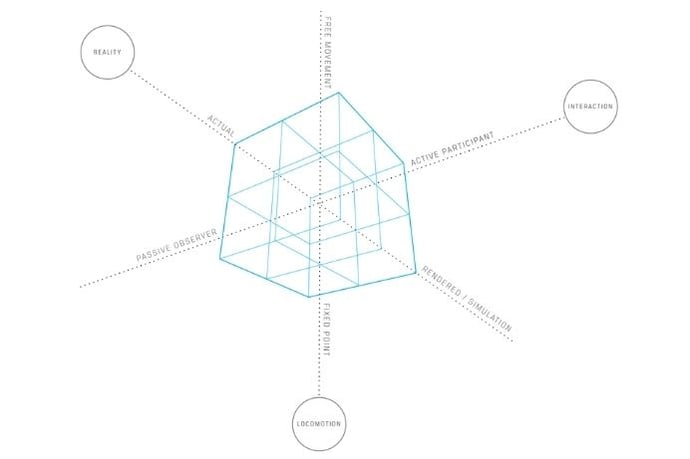
Virtual and Augmented Reality technologies are stepping up their game and into our daily routines by the minute. The ecosystem of many businesses and industries are being heavily impacted and transformed by VR/AR solutions. So far, we’ve seen some great examples of how VR/AR design and development are changing the face of our social and economic activities. They are shifting the paradigm in the tech sector and are becoming the core of our future transactional, recreational, and educational experiences.
Needless to say that VR/AR developers are already facing an ocean of new professional opportunities. Within this wild west of development, it’s impossible to ignore how enormous this challenge is for UX designers. Basically, we are talking about composing new tridimensional realities and sketching experiences that transcend what we are used to dealing with on 2D screens. At the same time, VR/AR experiences aspire -paradoxically- to look and feel like the real world. Let’s take a glance at the gamechanger UX and UI approach for virtual and augmented realities.
The biggest challenge for UX in Virtual Reality
The key to UX for VR is that the virtual experience needs to be as natural and intuitive as possible, taking into consideration aspects that were veiled for the bidimensional world of our mainstream devices. Depth, touch, and sound start to play an essential role. Instead of pushing consumers to interact with existing technologies in computer terms (through two-dimensional terminals), VR/AR user experience pursues the goal of allowing users to engage directly with space, very much alike to how they do in the real world.
When you design for VR, you are not only designing for the system’s capabilities, you’re designing for people’s already existing habits, mindsets, and instincts.
Designing “natural” experiences might sound like a breeze, but it’s extremely complex. UX in VR demands a thorough real-world understanding that we are not used to analyzing because we’ve learned to navigate it almost unconsciously.
VR/AR designers need to visualize the typical physical space, think about ways humans communicate with their environments, and then design immersive experiences that can generate trust and amusement at the same time. Designers take user experience to the next level by helping people slowly familiarize themselves with something that is very close to reality, but not quite.
The first glance to VR design frameworks
From a designer’s perspective, the first significant difference between mobile or web solutions with VR/AR applications is that they are made up of two types of components: environments (the 3D world you enter when you put on a VR headset) and interfaces (the set of elements you interact with to move around the environment and perform tasks). Let’s place them in axes to take into account the complexity of each component:

Any VR application can be positioned in the following graphic to show the relationship between these two components.
A VR app with no interface at all but with a complex environment can be, for example, a roller coaster ride simulator (the cabin is fully formed but you can only sit and experience the ride).
On the opposite side, you can find something like VR home screens with a developed interface but a very poor or non-existent environment.
When the combination and complexity of both axes intensifies, the emergence of a new design framework is required to transition the crafting of 3D/4D spaces. At this point in time, there’s still no defined trend, although we can affirm that most frameworks are based on the following design layers:
- Surroundings / Environment. Contextual elements create the atmosphere and set the user’s expectation for the experience. On this layer, information is provided through stimuli, location, and scenery change. Potential features: horizon, walls, trees, ambient music, background texture, wind, etc.
- Movement / Locomotion. Directional cues point towards decisive points in the narrative, highlighting targets, actionable items, or areas of interest. This layer’s elements give continuity to the experience and boost the effect of storytelling. Examples: a navigation dot, an open door, a character speaking, shakes, etc.
- Interaction / Feedback. Elements in this layer help the user to acknowledge its presence and abilities and understand the physical laws of the virtual world. Some possible user-initiated events: teleport to another location, jump, touch and grab objects, etc.

Besides these three layers, it’s important not to forget the fourth axis of any narrative, time, which continues to play a key role in VR/AR user experience as well.
UX for VR: A brave new world
When it comes to UX for VR, there’s a whole new world to explore. Having touched just the tip of the iceberg, it’s important to mention that the core values of UX methodologies still persist as essential design guidelines for VR/AR experiences.
The user-centered design cycle (plan, research, design, prototype, collect feedback, adapt, measure) is more valid than ever. So are all the UX tools that come along such as user personas, conceptual flows, wire-frames, and interaction models. The virtual reality design workspace adds new layers of complexity that challenge UX principles, and underscore its worth at the same time.
Not sure how AR/VR can impact your business? You know you need something but not quite sure what it is? Reach out to us and schedule a conversation with one of our experts - we’ll help you think through your goals.

